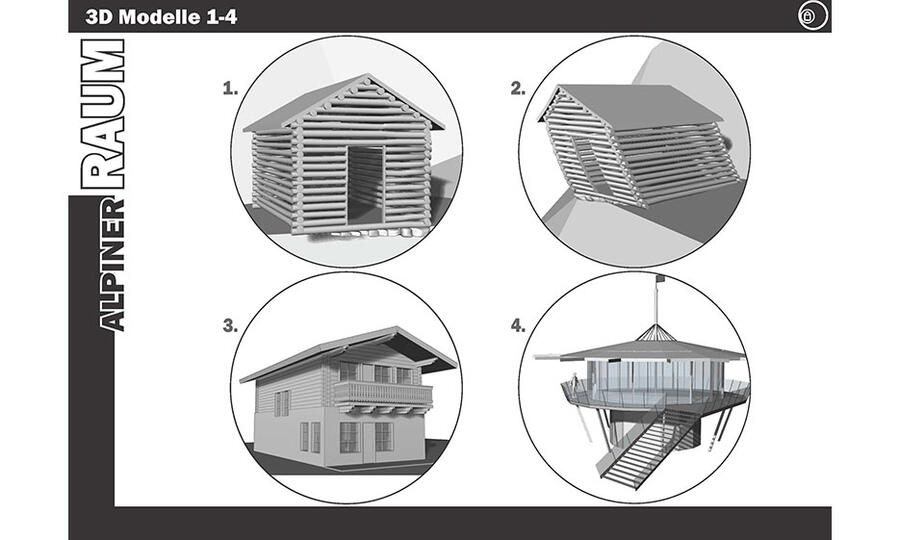The project could not be realised due to lengthy construction work at the planned location.
Due to poor crop of meadows in the valley, high alpine meadows (Hochmäder) were used for livestock farming in the Alps from the 11th to the 13th century. On the way over Timmelsjoch, the shortest crossing from Meran to Innsbruck, a permanent settlement averaging seven fireplaces over ist lifespan, is developed. Hay barns (Pillen) are needed for the management of altitudes, mule services, trade (and smuggling) flourish. Due to the construction of a railway line over the Brenner in the 19th century, transit over the Timmel becomes pointless. While high-alpine mountain tourism is slowly developing, agriculture around Gurgl remains and the use of barns continues. The landscape is used in a more varied way, now in summer for agriculture and in winter for snow sports. From the middle of the 20th century, alpine winter tourism increasingly replaces agriculture, and from some barns, alpine huts for winter tourists emerge. Other hay barns decay and a new architecture establishes itself. Tourism becomes an "industry" and agriculture recedes. Not only the use of the high alpine region changes, but also the main seasons: until the middle of the 20th century the summer months mainly were used, now above all the winter months are popular, that were used. The number of buildings has multiplied by a factor of 30, the amount of land constructed upon by a factor of 500.
The installation illustrates the change in alpine landscape with the example of a hay barn in Obergurgl: use, decay, upgrading and new construction become visible and audible.
Research Project
Research Area Mountain Regions: Georg Kaser, Wolfgang Gurgiser
This micro exhibition is part of the 350th anniversary of the University of Innsbruck.
Implementation
Alois Pircher, Institute of History and European Ethnology (Faculty of Philosophy and History)
Evelyn Tschigg, Alexandra Hanifle, Institute of Design (Faculty of Architecture)
Lisa Noggler, Christian Höller
